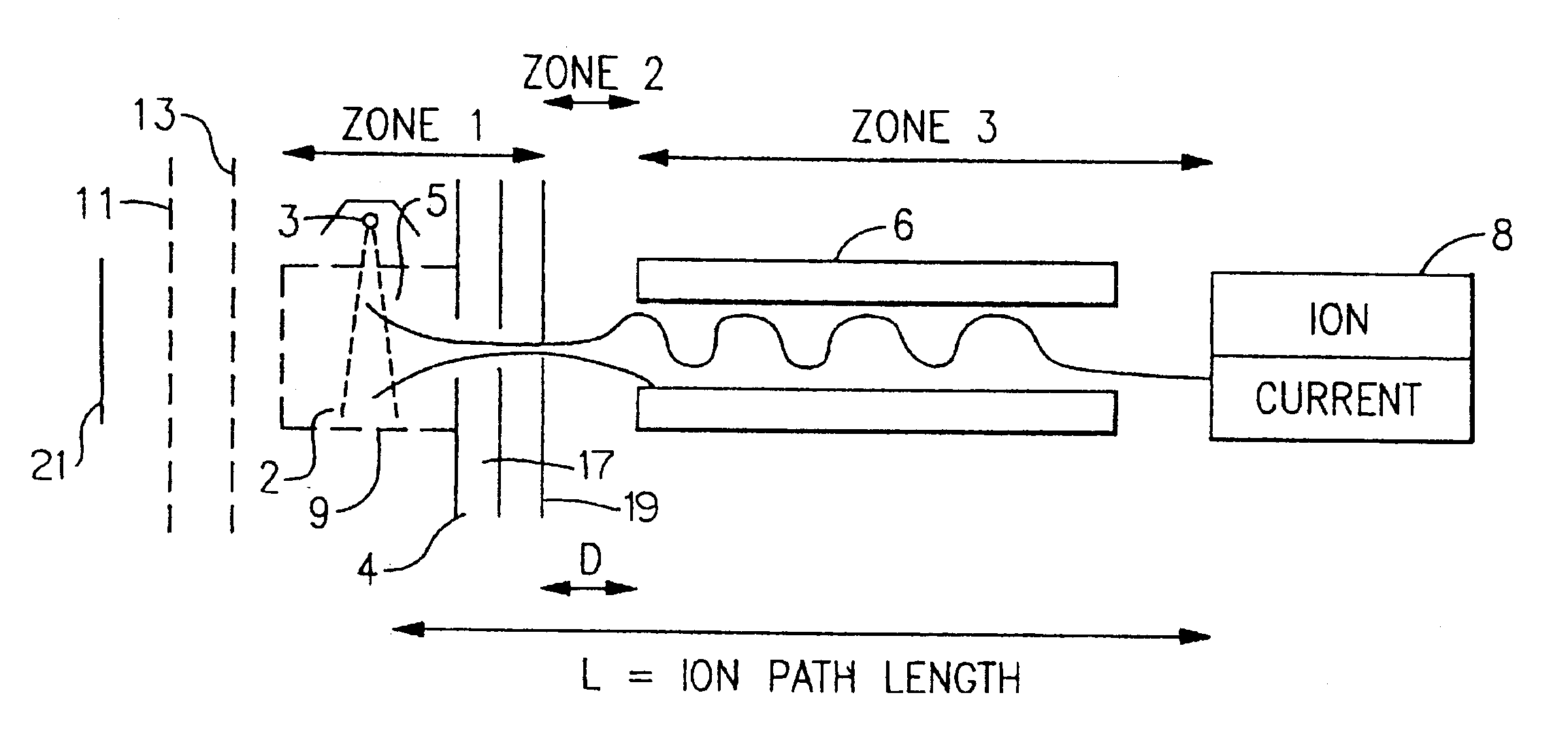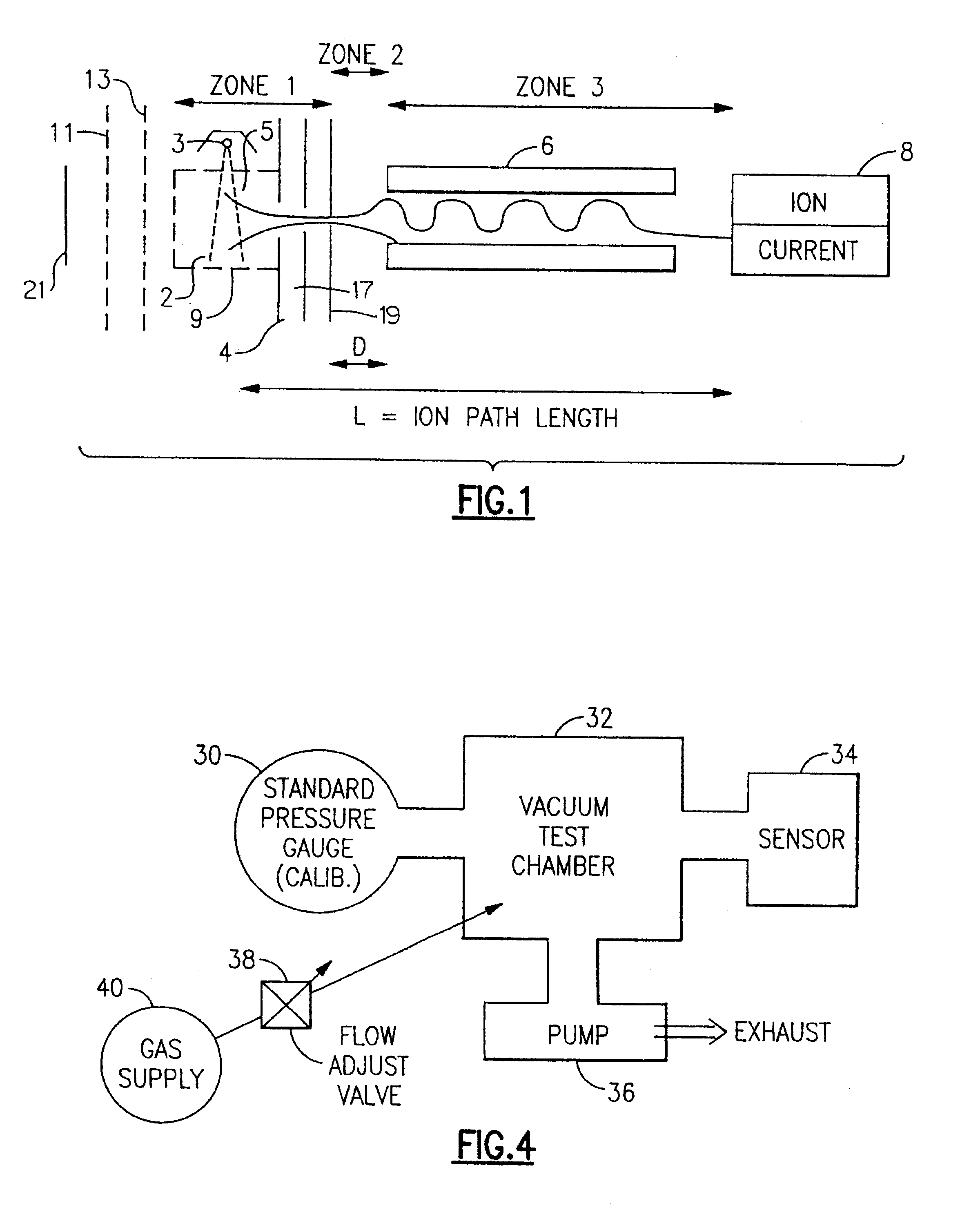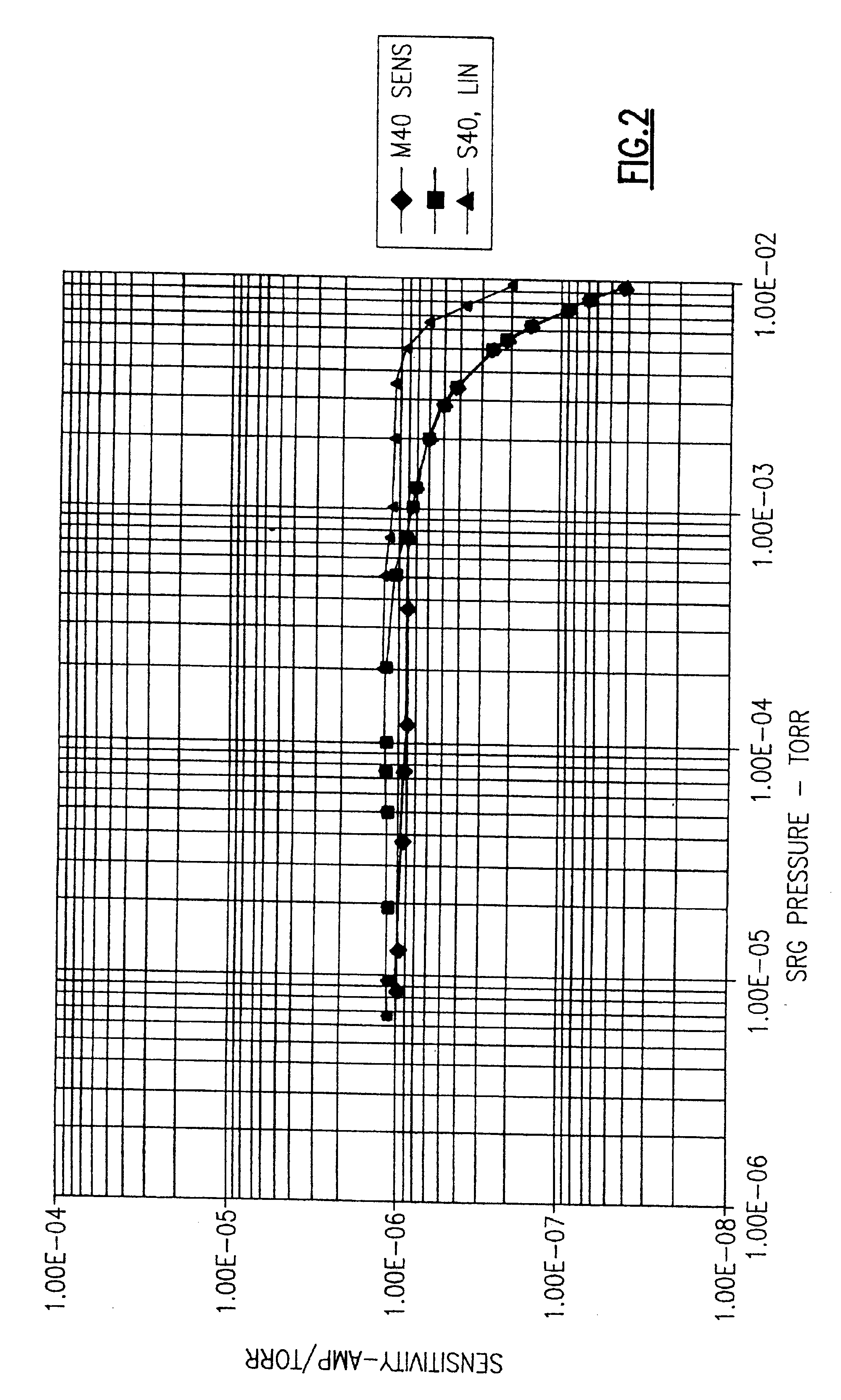Method for linearization of ion currents in a quadrupole mass analyzer
a quadrupole mass analyzer and linearization technology, applied in the field of quadruple mass analyzers, can solve the problems of non-linearity between pressure and ion current, the loss of ions in the high operating pressure area of the quadrupole mass analyzer, etc., and achieve the effect of expanding the pressure range of the gas analyzer
- Summary
- Abstract
- Description
- Claims
- Application Information
AI Technical Summary
Benefits of technology
Problems solved by technology
Method used
Image
Examples
example 1
The following example relates to a correction for linearization of ion current for a gas sample of nitrogen using a quadrupole sensing apparatus as illustrated in FIG. 1 or FIG. 4.
The sensor output signals conducted at 500, 200, and 100 microamp emission currents, were linearized using the above described mathematical relationship. The linearity generated from the tests are shown in FIGS. 5-9.
From FIG. 5, the curve labeled M28, UNLIN represents the normal nitrogen linearity of the sensor system shown in FIG. 1. At 500 microamp emission, the unlinearized mass 28 signal begins to deteriorate from a linear (1:1) relationship at approximately 3.times.10-4 torr, with the signal becoming flat at approximately 4 mtorr.
The total ion source current (labeled ITC) curve is used to calculate the total ion source pressure at each pressure setting. The ion source pressure is determined in the following manner. The sensitivity (S) at each pressure setting is calculated by measuring the partial pre...
example 2
The output signals from a linearity test for a gas mixture were also linearized using the above mathematical relationship, that is using equation (21). The linearity for the test gas mix were conducted at an emission current of 100 microamps. The partial pressures (unlinearized) of the individual gas mix components detected by the gas sensor as plotted against total gas pressure is shown according to FIG. 8. The gas mix used for this specific linearization test is a standard mixture commonly used to tune RGA sensors. The gas mixture consists of the following components:
Hydrogen (M2), Helium (M4), Neon (M20), Nitrogen (M28), Argon (M40), Krypton (M84), and Xenon (not detectable due to setting of the quadrupole mass filter).
Referring to FIG. 8, the curve labeled M#, UNLIN illustrates the unlinearized output of the test mix components detected by the ion detector. The curve (ITC) represents the total ion source current detected at each pressure setting for the gas mix. The total ion cu...
PUM
 Login to View More
Login to View More Abstract
Description
Claims
Application Information
 Login to View More
Login to View More - R&D
- Intellectual Property
- Life Sciences
- Materials
- Tech Scout
- Unparalleled Data Quality
- Higher Quality Content
- 60% Fewer Hallucinations
Browse by: Latest US Patents, China's latest patents, Technical Efficacy Thesaurus, Application Domain, Technology Topic, Popular Technical Reports.
© 2025 PatSnap. All rights reserved.Legal|Privacy policy|Modern Slavery Act Transparency Statement|Sitemap|About US| Contact US: help@patsnap.com



